Offwidth Tips for Beginners
Offwidth. What is it anyway?
Trad climbing generally breaks down into three main groups.
- Finger cracks: These are cracks typically between the sizes of .75 and .2 camalots. They are finger sized cracks that require lots of finger strength, power, and balance to overcome.
- Hand cracks: These are cracks that range typically between the sizes #1-#3 camalots. Everyone loves a good hand crack! They feel comfortable most of the time, and can be a welcome rest on many hard climbs.
- Offwidth cracks: This is any crack larger than a number 3 camalot (usually). This size requires you to stack your hands on top of one another, it asks you to shove all sorts of body parts into the crack from forearms to calves to (sometimes) your whole body!
There’s always one pitch on the big wall that requires offwidth technique, or one intimidating lead at the crag that everyone talks about. For those who get sucked in (literally) to this wide and wonderful style of climbing, there can be a steep learning curve. Many folks dislike offwidth climbing because they don’t understand the technique, or they wear the wrong clothes, or the wrong shoes. I want to set the record straight and give some concrete tips that can change the way folks see offwidth climbing. Additionally, if you’re a budding offwidth climber yourself, I hope these tips will help speed you along your wondrous and wide climbing journey!
More Tape. Like, a lot more.
The biggest change from traditional crack climbing to offwidth climbing is how much tape you should be using. Sure sure, you can wear hand jammies or just toughen your skin, but if you want to be consistently climbing hard offwidths, you should prioritize protecting your hand skin. Every hard offwidth climber I know has a specific taping technique that they use to protect their hands. Tape also gives you the tiniest bit more friction, which can make all the difference when dealing with slick granite cracks.
I recommend doing a full coverage tape glove. Make sure you cover the backs of your hands and your thumb. In offwidth climbing your thumb takes a lot of abuse and you won’t be able to fist jam if you’re slipping in your own blood. Trust me.
Dress to Impress
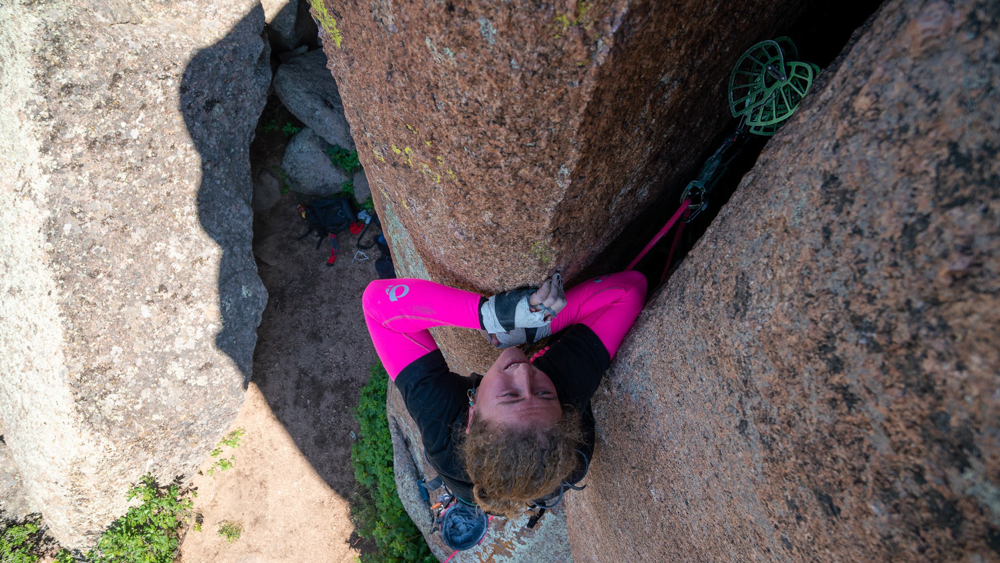
In addition to taping your hands to protect them, you’ll want to wear full coverage clothing from your wrists to your ankles. There are several options, some people like to wear long sleeves and tape their wrists, I personally like to wear cycling sleeves under a t-shirt or tank top. This gives me flexibility, protection, and the sleeves don’t bunch or slide around my body.
For my lower body I like to wear leggings, and if I know the climb has a chimney section on it, I’ll wear knee pads as well. The knee pads help protect my knees from painful bruising. The traditional offwidth pants are the sturdy carhartts or even (back in the day) painters pants. If leggings aren’t your thing, you can try that, however I’ve found that in tight calf locks, it can be difficult to get your leg into the crack with the pants bunching around the ankle. The clothes really make a difference in this sport!
Learn to Confidently Walk Your Cams
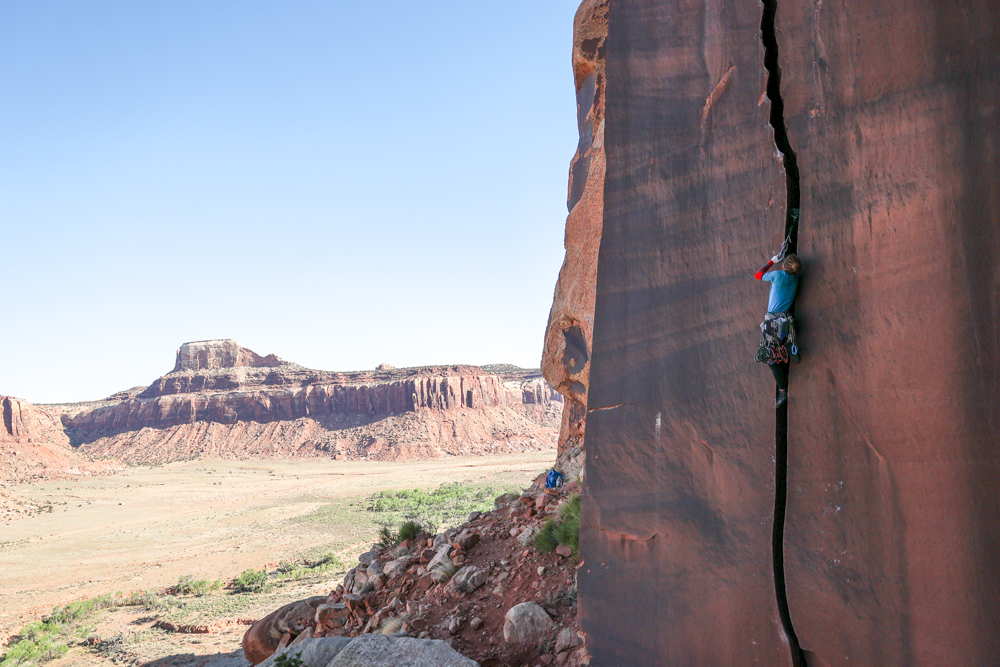
Offwidth cams are heavy, and expensive. Even the new fancy light cams from Black Diamond are heavier than the average set of C4’s. So, on a long route that has a stretch of 6’s, how are you going to safely protect it? Answer: You’re going to bump your cams. Seen from afar (above photo) it looks as if the leader is running it out in a very unsafe way. However, the reality of the situation is she is safer than ever. In most long offwidth climbs, you’ll want to bump two cams along with you as you climb. You’ll keep one in front of you, pushed as deep as you can and one above you. This has many benefits.
- It keeps the rope out of the way of your feet
- It keeps you on top rope while climbing in difficult terrain
- You don’t have to mess with taking gear off your rack while cruxing out
- You can easily leave one cam behind as the sizes change and still be safely protected from above
Keep a Tight Belay
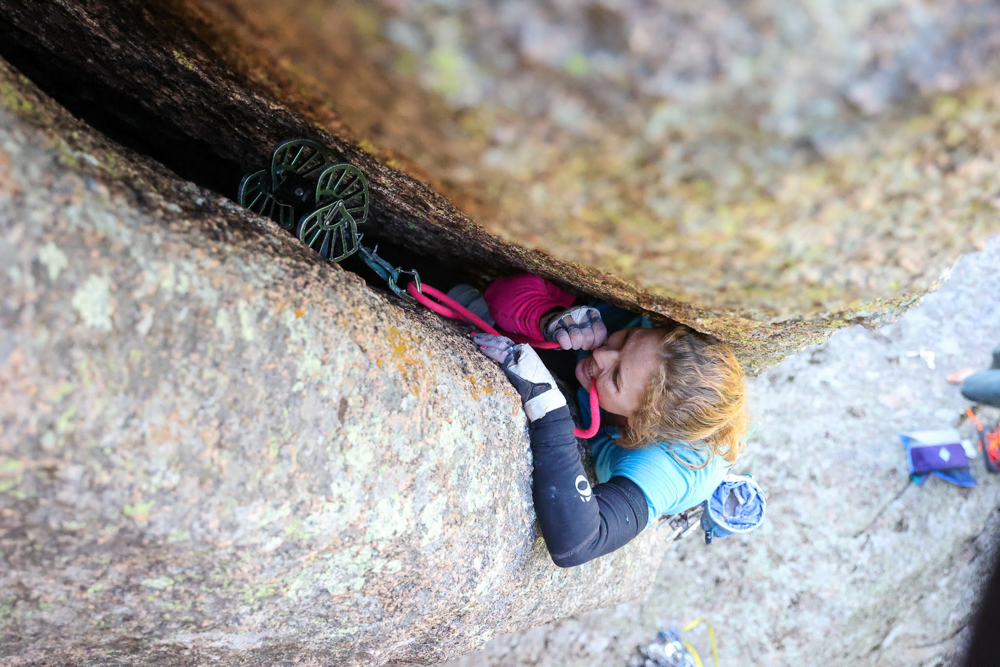
When climbing offwidth, it’s very easy for the rope to get pinched in between your body and the rock. This often leads to a bunch of slack pooling up on your lap that the belayer can’t feel. When giving an offwidth belay, you should keep a tight belay for this reason, your leader might have an extra 3 feet of slack sitting in their lap. Giving out more slack could be dangerous. Also, depending on the offwidth, you don’t want to take a big whip as you are more likely to cheese grate your face on the way down. Trust me on this one.
Get Used to Long Leads and Longer Belays
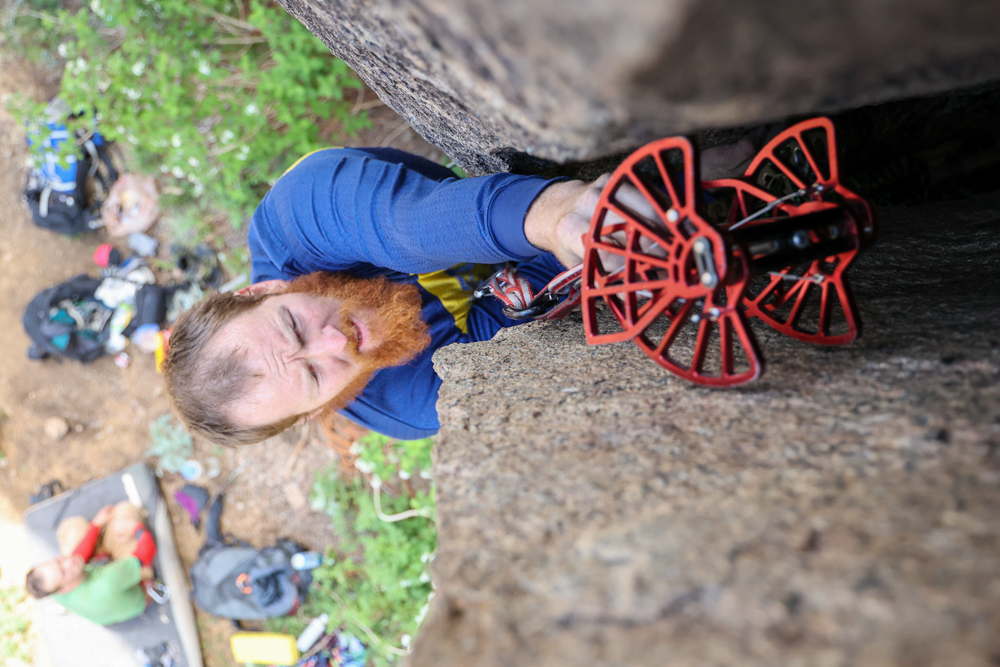
Don’t worry about taking ‘too long’ on an offwidth pitch. Typical offwidth belays are about one hour long. It’s kind of like aid climbing in that way. As the leader, get used to trying hard for an extended period of time, and as the belayer, get used to restful and attentive belays. I’ve been on lead for over two hours before, sometimes you just gotta go on a journey.
Remember, It’s All in the Technique
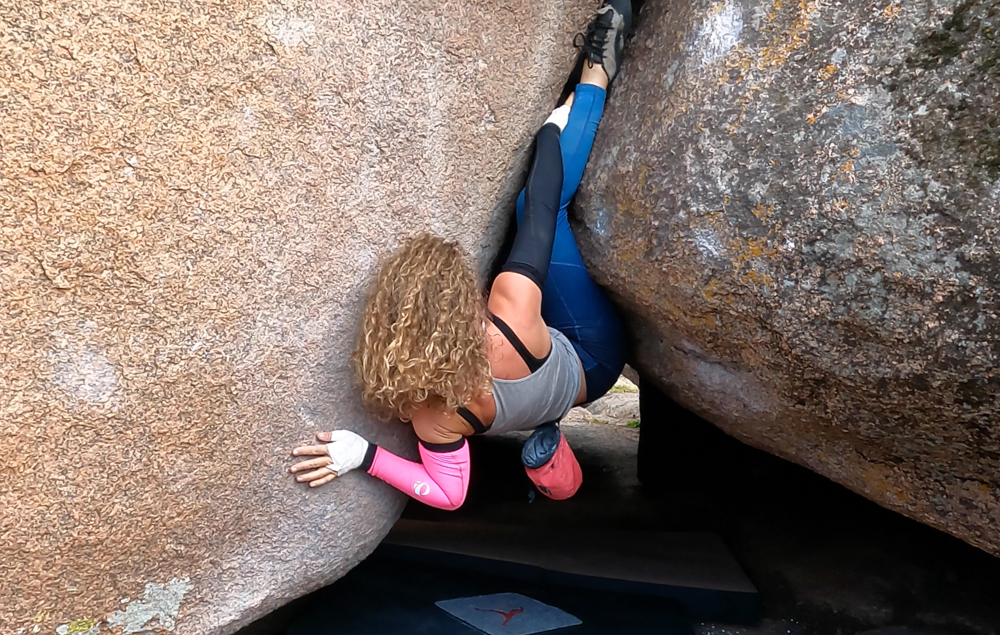
When it comes down to it, offwidth is 75% technique, and 25% endurance. The most challenging part about offwidth is that the technique varies so wildly between body sizes. For me, number four sized cracks are calf locks and baggy fists, but for a different body type, fours might be calf locks and butterfly stacks. In both instances we are calf locking, but because of the difference in hand size, the technique for placing gear, managing rope, and moving in general, will be wildly different. This is where I see most people getting frustrated with offwidth. The difference in leg length, arm length, torso length, heck even hip size and foot thickness, will drastically change the way you climb specific sizes. My advice? Don’t get too frustrated if you can’t figure out the size right away. Get curious about the technique and find a method of climbing the crack that works for you. Often this means ignoring your friends shouting beta at you from below!
Final Words of Advice
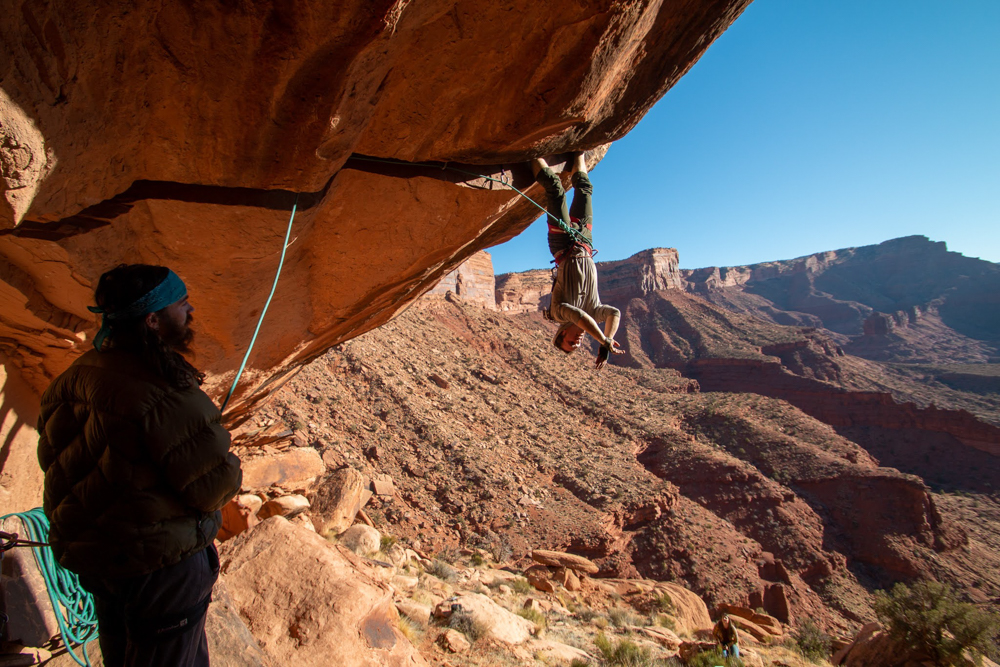
To sum it all up: Cover your body, learn to manage your gear, keep a tight belay, and have patience. Offwidth is a super fun and rewarding style of climbing. It has challenged me mentally and physically in ways that no other climbing has ever done. But most importantly, have fun! This sport is hard, yes, but it is wacky and interesting and fun just like any other style of climbing.
Photo credit cover photo: Kaya Lindsay
About the Gear Tester
Kaya Lindsay is a writer, photographer, and filmmaker with a passion for rock climbing and the outdoors.
In 2016 she converted a Sprinter Van into a tiny home and has been traveling around the US & Canada to pursue her passion for rock climbing. Since hitting the road she has begun a career in filmmaking and is currently working on her One Chick Travels series, highlighting solo female travelers who live and work to pursue an adventurous lifestyle. Her films have been highlighted by major brands such as Backcountry and Outside TV. To fulfill her passion for writing, she chronicles her many adventures in her blog. Professionally, she writes for the adventure sports company Outdoor Prolink and The Climbing Zine. Kaya hopes to spend many more years in her tiny home on wheels, Lyra, and is currently living in Moab Utah.

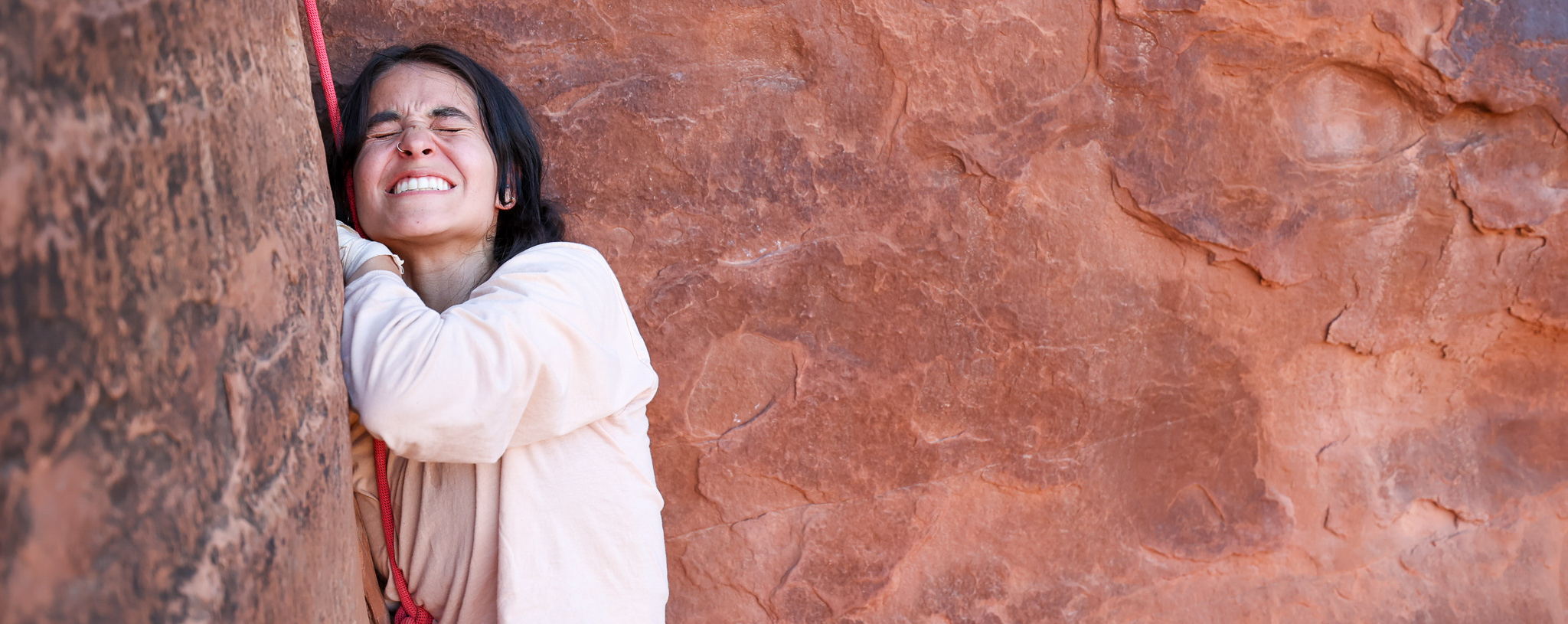
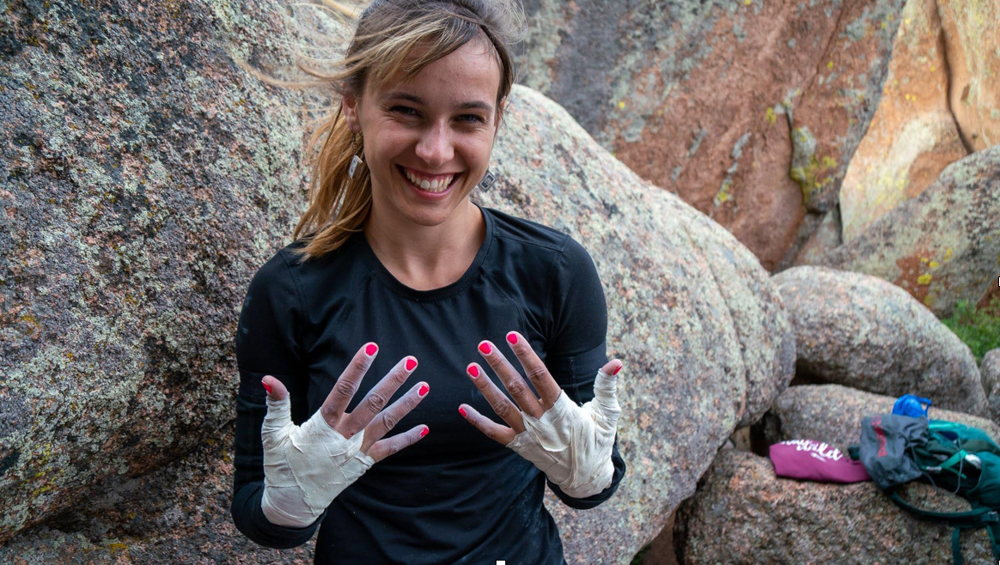










Thanks a lot for sharing such a great piece of article! I found it a good helpful write-up with a good sound and explanation. Here I have seen some valuable ideas that are definitely helpful for every climbing enthusiast. Please keep sharing more updates!
Thanks Frederick! We’re so stoked you found this article helpful 🙂 Happy climbing!